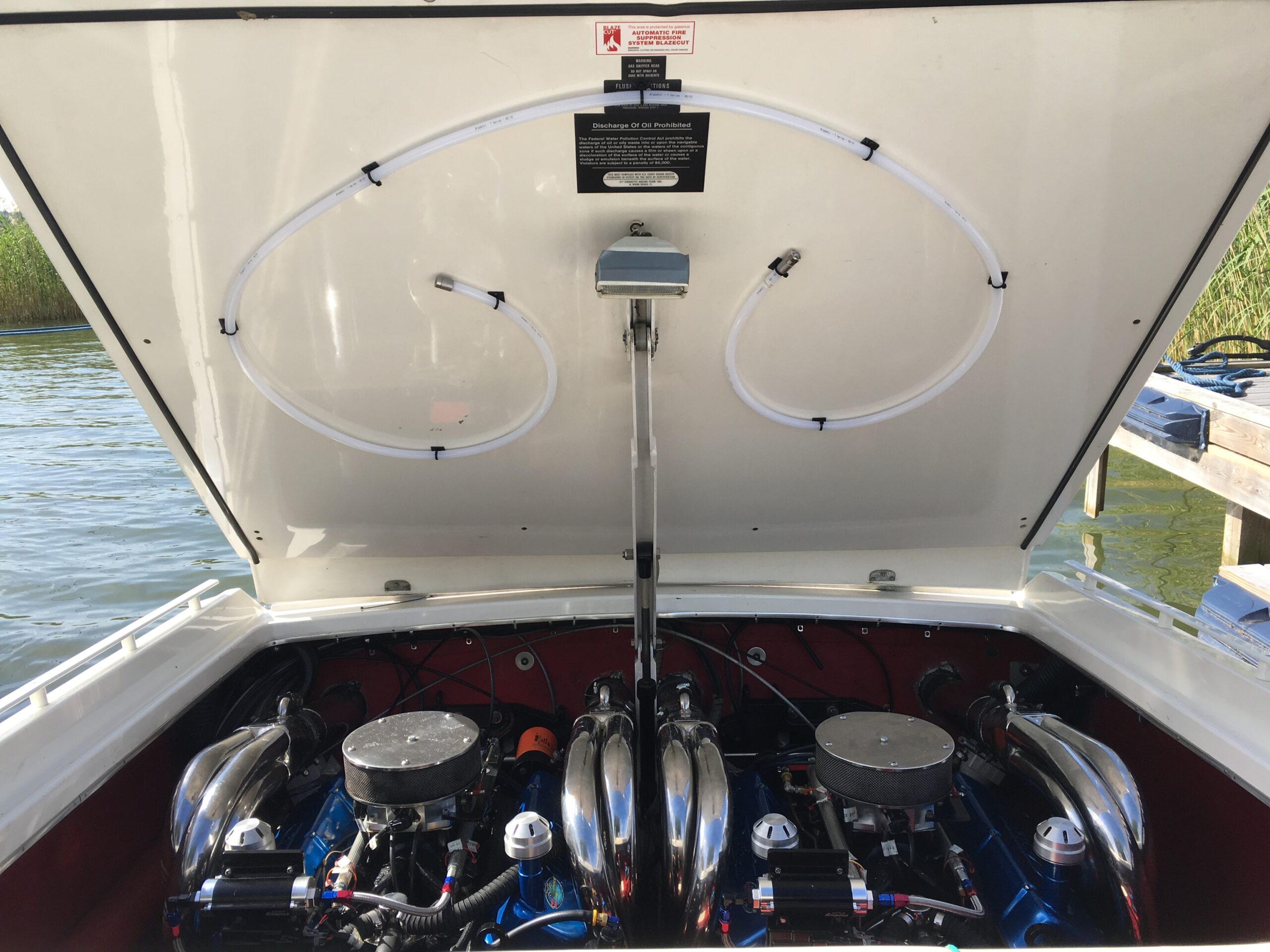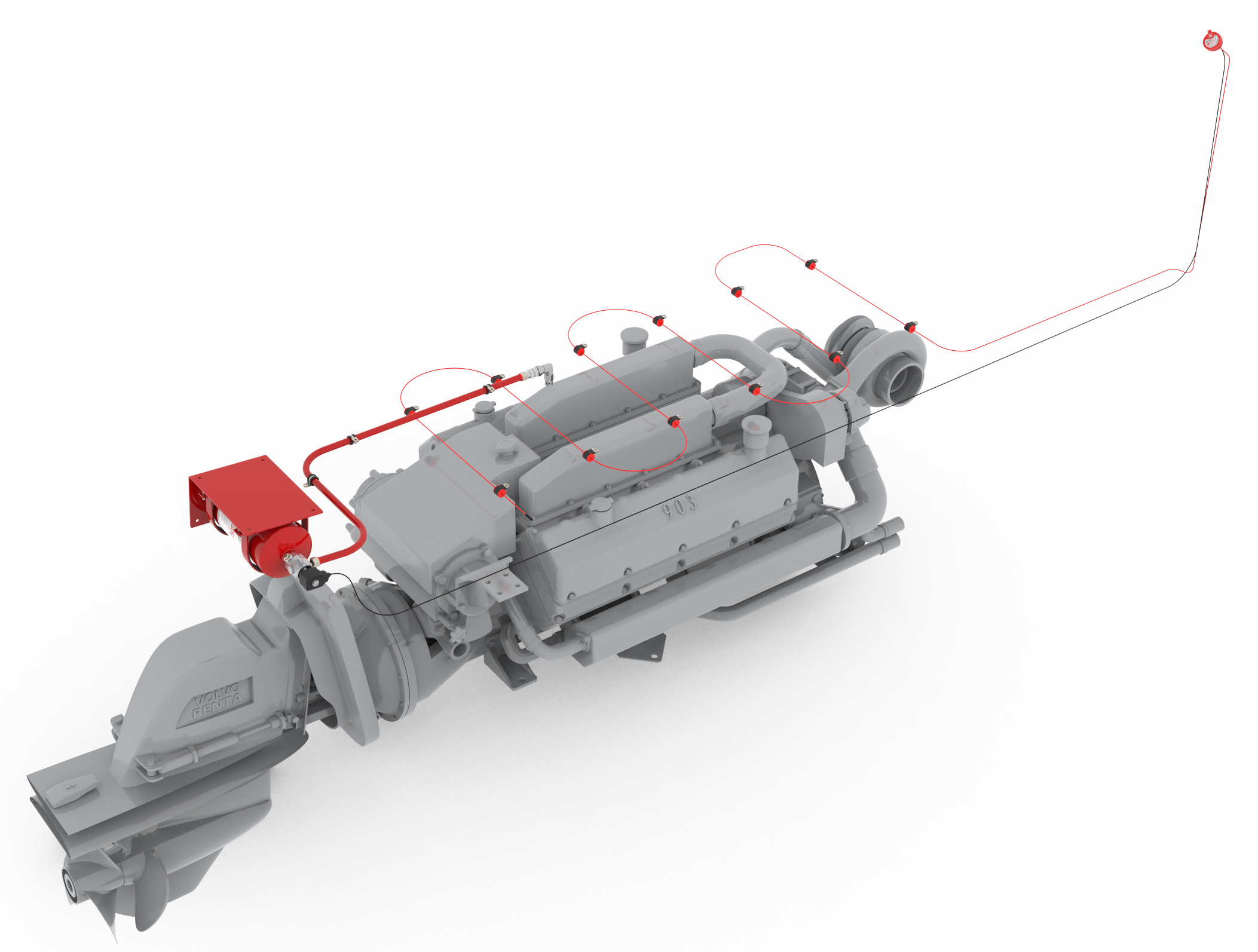Marine

Industry Risks
All type of boats run the risk of catching fire. Experiencing fire on a boat can be the most terrifying and potentially lethal situation anyone can face on the water. This is not limited to inboard engines, as outboard engines can experience most of the similar incidences.
Fuel leaks
A common cause of boat fires is faulty fuel-or oil lines in the engine bay that can leak onto hot parts of the engine.
Electrical faults in the engine compartment
Another common cause of boat fire is electrical faults in the engine area or power cables and the wiring harnesses. While these are especially common for older boats, even newer boats can run the risk of electrical faults. The main causes are the development of insulation damage, corrosion, or poorly installed modifications.

Overheated engine
Engine fires can also be caused by an overheated motor. Ways to prevent overheating include regular maintenance of impellers and water intake manifolds. However, this may not eliminate the risk as water intakes can block with debris at any time during operation.
Batteries and electrical panels
Faulty installation of batteries is another common cause of boat loss. Batteries may fail or could have damage or lose wiring. In some vessels, having several electrical panels throughout the boat further increases the risk of fire. In both small and large vessels, the main fuse board, normally located near the skipper’s seat, can run the risk of electrical faults. The main causes of electrical faults are the development of insulation damage, corrosion, or poorly installed modifications.
External power and charging
The connections for your shore power can also cause fire if faulty or not connected correctly. If there is not enough slack in the cords to allow for boat movement caused by wave, wind, or tidal action the cord connections can get strained and put the boat, charging point and surroundings at fire risk.

Consequences
Every year fires and explosions injure a considerable amount of recreational boat owners and passengers causing millions of dollars in property damage. Many incidents that occur could be prevented or at least have the damage minimised. Yet too many boat owners never consider fire risks, how to mitigate them or what to do should they face one. Many also do not realise the shortcomings of fire extinguishers. While hand-held fire extinguishers are a must to have on board, they have a short discharge time, and the user needs to get awfully close to the fire to accurately direct it at the base of the fire
to have any real affect. This means that the person trying to put the fire out has a short window of doing so (and too is in case if the fire is discovered early enough to have a chance of putting it out) and in parallel is at risk of injuring themselves in the process.
The BlazeCut Difference
BlazeCut Fire systems can be installed in minutes for outboard and small inboard motors. When a fire occurs, the BlazeCut system automatically actuates in the engine compartment extinguishing the fire in seconds with very minimal damage to the boat, thereby substantially increasing the likelihood of saving the lives onboard.
BlazeCut fire systems can be designed and installed to cover multiple risk zones with a single system covering the engine, electrical controls, and kitchen area.
Most insurance companies will not insure a boat to the full amount that has been spent on refurbishment. A BlazeCut system provides peace of mind as an invaluable ally in minimising injury and damage, saving lives and money.

Marine Certifications
BlazeCut’s full range of C Series system products have received the Certificate of Conformity for Marine applications. This certification is in accordance with ISO9094:2022 and the European Directive 2001/95/EC, underscoring BlazeCut’s commitment to delivering highest quality products and continuous developments. Our customers in the marine industry can now have even greater confidence in our C Series products, knowing they are certified to meet the highest standards of performance and reliability.

Industry Application Examples

Outboards

Sterndrives

Cockpits

Marina applications

Jet skis

Yachts


